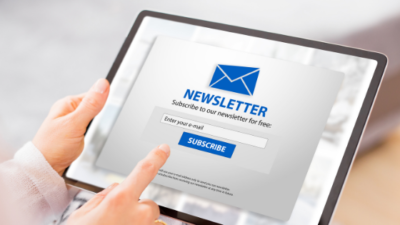Over the last several months, we’ve seen major acquisitions in the newsletter space such as Business Insider buying Morning Brew and Twitter picking up Revue. Additionally, in that same timeframe, media companies like Forbes and Facebook have expanded their offerings with the launch of newsletter platforms. So why are all these media companies – both traditional and social – now investing in a medium that has been around for more than 30 years? In short, we are facing a perfect storm of technology and consumer trends, and email newsletters are right in the eye of that storm. Here are the three big reasons why newsletters are making a splash right now.
Audiences want more control over the content they consume
From video and audio streaming services to social media feeds, today’s media consumption habits reward niche content and can be easily consumed whenever and wherever the person is present and paying attention. But that doesn’t mean this content is always considered trustworthy. People want to know where the information they are consuming is coming from. This concern became even more prominent during the global pandemic when getting accurate information meant the difference between life and death.
With trust top of mind, channels like social media have taken a big hit. In fact, according to Statista, 89% of Americans believe that social media is responsible for the spread of false news. It makes sense: it’s difficult to know whether the media you’re engaging with is a “trusted source” when it is promoted by an algorithm or your racist uncle. To protect themselves from misinformation, consumers are opting-in to receiving content that’s from a source they know and trust. That’s where email newsletters fit in.
Email newsletters check every box: they are subscriber-based: the consumer opted-in to receive it and knows the source is trustworthy, they can provide niche, deep-dive content of interest to the consumer, and can be consumed at any time, across any device.
Publishers want more direct relationships with audiences… and their data
For publishers, there are multiple benefits to developing an email program to engage consumers. The first is related to content. The email channel is logged-in media that publishers can use to get in front of their readers without having to rely on third-parties, like social media platforms, to distribute content for them. Email newsletters are also cheaper and easier to produce than other types of content, such as videos or podcasts, making it less risky for publishers to test new ways to increase reader engagement and ROI.
The second is monetization, which goes hand-in-hand with identity resolution. With Google Chrome phasing out third-party cookies in less than a year, publishers are doubling down on collecting first-party data (most importantly the email address) to continue to monetize audiences. And, of course, getting people to subscribe to email newsletters is a great way to collect them! When publishers know who their audience is, site traffic driven from the logged-in newsletter enables publishers to charge advertisers a premium for inventory. Additionally, the logged-in nature of newsletters helps sell subscriptions. Publishers who have insight into reader behavior can implement a dynamic paywall, waiting to put the wall up until the likelihood of subscription conversion is highest.
Advertisers want media that delivers both relevant audiences and measurable performance
Email isn’t just great for publishers. Advertisers also win with the channel. As a general rule, advertisers always want to be where their audiences are, and the more they can align with content that matches their brand identity, the better. As more audiences subscribe to email newsletters, and more media companies start producing them, we’ll see advertiser dollars shift over to the email inventory. While the newsletter will never reach the scale of a social media feed or a homepage, it has something more valuable: a greater level of audience intent and engagement, since this is content the audience has subscribed to and is consciously engaging with. We saw this trend previously with podcasts, and companies like Morning Brew and The Bustle are proving it out now with newsletters.
Furthermore, even when doing a “branding” buy, advertisers care about performance and the ability to measure performance. Since email, like social media, is a logged-in channel, it offers more accurate targeting, goal-based optimizations, and more reliable measurement and audience insights – especially when the advertiser has a robust email program of their own.
Which brings us to our last reason email is resonating with advertisers: email is future-proof when considering the coming cookie apocalypse. Email, because it is logged-in and not cookie-based, it will not be impacted by the loss of the third-party cookie, making it a safe investment for both audience targeting and attribution in the long-term.
As we grow closer to the deadline for cookies, we expect to see even more investments in the email newsletter. We’re only two months into 2021 and it’s clear that consumers, publishers, and advertisers all agree this 30-year-old medium is the future.









